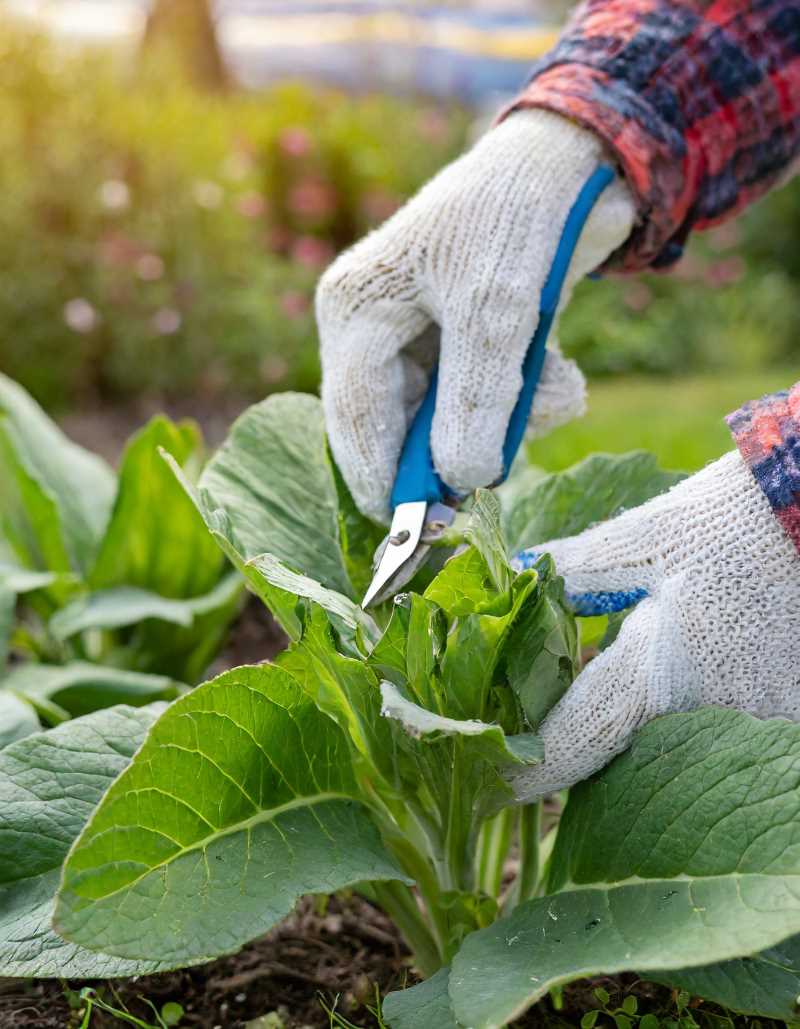Why Comfrey Deserves a Place in Your Garden
Comfrey has colorful blooms and draws in pollinators. This resilient plant is a gardener's ally, creating rich fertilizer from deep-soil nutrients. Historically used as a healing poultice, comfrey's uses are both practical and steeped in folklore.

In the tangled vines of any thriving garden, beneath the showy blooms and well-groomed borders, there exist plants with wilder reputations. They lurk with quiet determination, their practical virtues often outweighing their sometimes unkempt appearance. Such is the comfrey clan, a group of remarkably adaptable and useful plants that simultaneously confound and beguile gardeners and nature enthusiasts alike.
The comfrey family (members of the Symphytum genus, within the Boraginaceae or borage family) boasts a riotous palette of colors. Their bell-shaped flowers, borne on drooping clusters, range from pristine white to pale yellow, rosy pink, and even a beguiling bluish-violet. This splash of color is a result of their enthusiastic nature to hybridize, creating an ever-changing display.
Like some quiet rebel, comfrey favors places where others might not readily thrive — damp ditches, meadows, and the edges of streams are home to their heart-shaped, hairy leaves. And yet, their appearance belies hidden gifts. Each plant sends down a long, burrowing taproot, a stubborn anchor that also serves a more beneficent purpose.
Comfrey is a relentless miner of the earth. Its determined roots delve into the depths, drawing up precious minerals and nutrients that other plants often cannot reach. These it generously stores in its broad leaves. Gardeners have known this for centuries, and so comfrey earned its affectionate title of “gardener's friend.”
The harvest of comfrey is a ritual in itself. Donning gloves to protect from the prickly hairs, leaves are cut and chopped, then steeped in water to create a rich, dark liquid fertilizer. A pungent brew, yes, but one that gives a vital boost of everything from nitrogen to potassium, transforming ailing plants with renewed vigor. Comfrey's contribution is a potent reminder of the cycles of growth and decay at the heart of a thriving garden.

Beloved by Beasts and Beneficial Bugs
The open, sweetly scented flowers of comfrey aren't just a feast for gardener's eyes. Bees of all stripes — from hulking bumblebees to dainty solitary bees — find them irresistible. Butterflies, moths, and hoverflies join the party too, buzzing around the prolific blooms. Such is comfrey's offering to the intricate web of life that makes a garden whole, providing nectar to these tireless pollinators.
The common names of plants often betray their more practical uses in older times. Comfrey has numerous monikers – bruisewort, slippery root, and perhaps most notably, knitbone. Cultures as diverse as ancient Greece and traditional Chinese medicine revered its healing properties.
Broken bones might be mended with a comfrey poultice, its constituents believed to stimulate the rapid growth of new tissue. Bruises and sprains could be salved with its soothing green magic, and even pesky nettle stings were a mere itch when countered with crushed comfrey leaves.
Modern research has cast some doubt on the efficacy of comfrey for serious internal uses, prompting caution, particularly for long-term consumption. However, its external use for minor complaints is well-regarded, though always best under the guidance of a knowledgeable practitioner.
The comfrey clan, like any compelling character in a good story, possesses a blend of contradictions. Weedy yet well-loved, a splash of wild color in an otherwise ordered space, and a reminder of nature's ability to provide potent remedies. Perhaps that's the key to their curious appeal — a touch of untamed spirit in a world we so often try to control.




